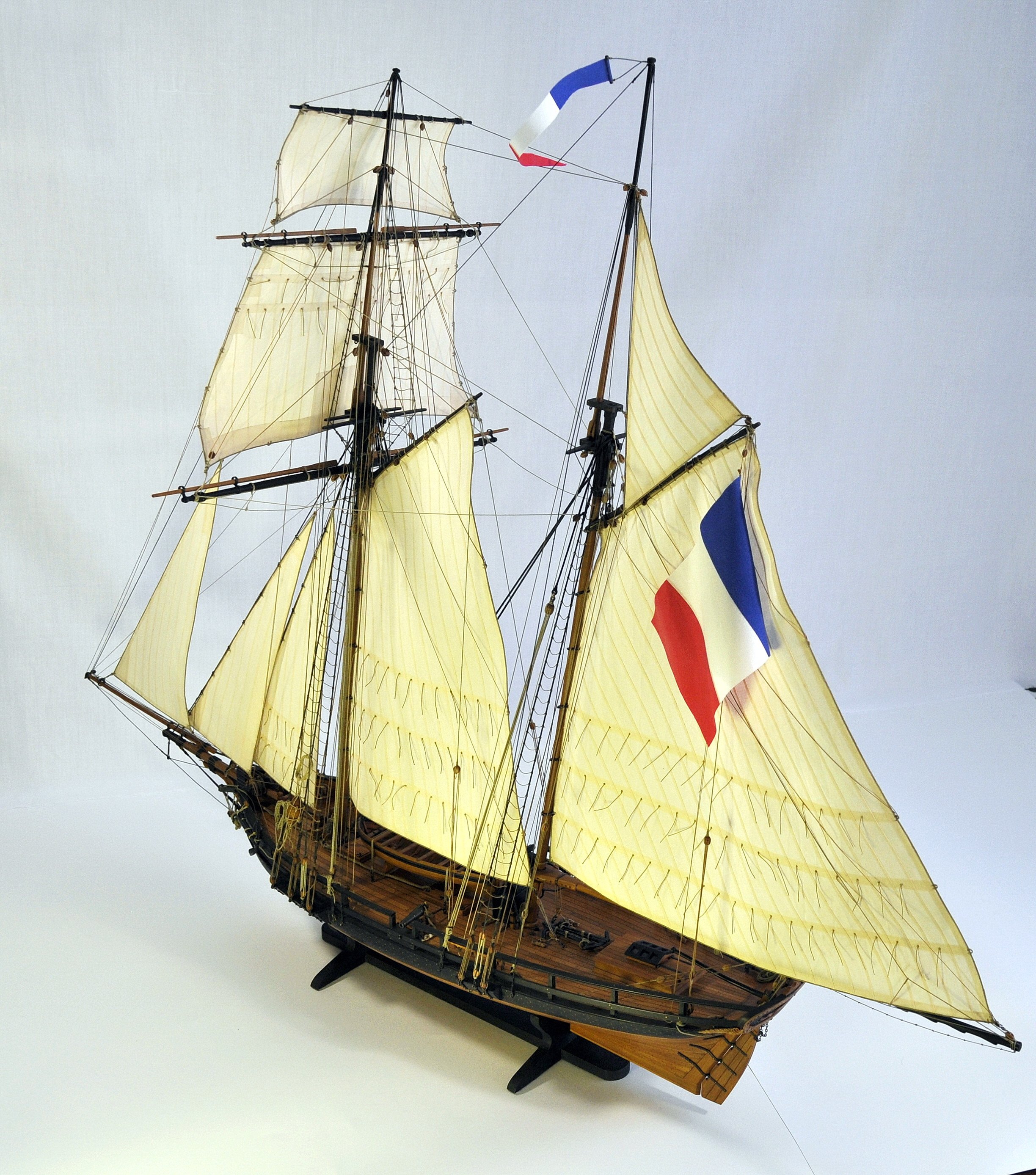-
Posts
557 -
Joined
-
Last visited
Content Type
Profiles
Forums
Gallery
Events
Everything posted by KORTES
-
And the last step. We fix the thick thread to our "chief" thread and pull it in in place of the pulled out threads. I had to skein the pulled-in thread, because I couldnt fing the thread of the required diameter. That's how I did it.
-
The next step. Since the threads in batiste are packless and not strong I couldn't manage to put in the threads with their help all at once. So I had to make a transit step - put in the "chief" thread, with the help of which i pulled in the pulled-in threads.
-
Greetings Keith. Taking into the consideration the gained experience, the technology is the following. Mark the width of the cloth. And draw out several threads. In my case I had to pull out five threads. It depends on the width of the tread you want to put in in place of the taken out ones, and , of course of the size of the sail. We need to pull 5 threads out, leave in place 2, one of them will be used to put in place the "chief" thread, and the second will be left as a backup - in case the first one will break. If you manage to pull the thread in without tearing it, this second one will have to be pullled out.
-
The second version. I had to redo it several times. The first time the material wasnt right - when I madeeverything and dyed it, the batiste turned out to be too transparent. I had to redo using a more dense one.
-
Greetings my dear colleagues, Let me please present some of the results of my experiments on making the sails. I have tried two technologies, one by Shevelev, which I already used while working on the "La Jacinthe", and the other one by Bikov. After the studying the results, I opted for using the last one. I have been practicing on making the mainsail.
-
While the hull is drying, I decided to coat the deck with tung-oil. What can I say - the tung-oil is thicker than the oilseed oil. I richly coated the deck, the absorptivity is nice. My expectations that the deck would have lighter color weren’t fulfilled, but the aging effect was quite nice. I coated it in one layer, i think i’ll leave it at that, but it would be seen after polishing.
- 306 replies
-
- schooner
- la jacinthe
-
(and 1 more)
Tagged with:
-
I oil-coated it, I decided to coat the hull with linseed oil, hoping it would give a darker color than tung-oil on the deck.
- 306 replies
-
- schooner
- la jacinthe
-
(and 1 more)
Tagged with:
-
My dear colleagues, thank you very much for those kind words and attention to my work.
- 306 replies
-
- schooner
- la jacinthe
-
(and 1 more)
Tagged with:
-
Thank you very much Doris. Your work is also gorgeous and I admire your craftsmanship a lot. My best regards.
- 306 replies
-
- schooner
- la jacinthe
-
(and 1 more)
Tagged with:
-
- 306 replies
-
- schooner
- la jacinthe
-
(and 1 more)
Tagged with:
-
- 306 replies
-
- schooner
- la jacinthe
-
(and 1 more)
Tagged with:
-
- 306 replies
-
- schooner
- la jacinthe
-
(and 1 more)
Tagged with:
-
- 306 replies
-
- schooner
- la jacinthe
-
(and 1 more)
Tagged with:
-
- 306 replies
-
- schooner
- la jacinthe
-
(and 1 more)
Tagged with:
-
I have finished the nailing of the broadsides. I opted for the brass of 0,6 mm, and tried to make the nail-heads a little dome shaped.
- 306 replies
-
- schooner
- la jacinthe
-
(and 1 more)
Tagged with:
-
- 306 replies
-
- schooner
- la jacinthe
-
(and 1 more)
Tagged with:
-
My greetings, Johann. I completely agree with You, french ships of thant period are very beautiful.
- 306 replies
-
- schooner
- la jacinthe
-
(and 1 more)
Tagged with:
-
- 306 replies
-
- schooner
- la jacinthe
-
(and 1 more)
Tagged with:
-
Dear colleagues Paul and Gary thank you very much.
- 306 replies
-
- schooner
- la jacinthe
-
(and 1 more)
Tagged with:
About us
Modelshipworld - Advancing Ship Modeling through Research
SSL Secured
Your security is important for us so this Website is SSL-Secured
NRG Mailing Address
Nautical Research Guild
237 South Lincoln Street
Westmont IL, 60559-1917
Model Ship World ® and the MSW logo are Registered Trademarks, and belong to the Nautical Research Guild (United States Patent and Trademark Office: No. 6,929,264 & No. 6,929,274, registered Dec. 20, 2022)
Helpful Links
About the NRG
If you enjoy building ship models that are historically accurate as well as beautiful, then The Nautical Research Guild (NRG) is just right for you.
The Guild is a non-profit educational organization whose mission is to “Advance Ship Modeling Through Research”. We provide support to our members in their efforts to raise the quality of their model ships.
The Nautical Research Guild has published our world-renowned quarterly magazine, The Nautical Research Journal, since 1955. The pages of the Journal are full of articles by accomplished ship modelers who show you how they create those exquisite details on their models, and by maritime historians who show you the correct details to build. The Journal is available in both print and digital editions. Go to the NRG web site (www.thenrg.org) to download a complimentary digital copy of the Journal. The NRG also publishes plan sets, books and compilations of back issues of the Journal and the former Ships in Scale and Model Ship Builder magazines.





